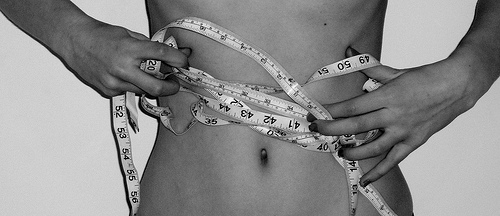
A new study reveals the secret of how some fashion and beauty magazines continue to attract devoted audiences, even though they glamorize super-thin models that would seem to taunt normal-sized women.
The research suggests that some readers, rather than comparing themselves unhappily with the thin models, may derive “thinspiration”: the belief that they can make themselves look just as attractive as the models they see in these magazines.
But this is not any kind of positive inspiration, says Dr. Silvia Knobloch-Westerwick, PhD, author of the study and professor of communication at The Ohio State University.
“Women get the message that they can look just like the models they see in the magazines, which is not helpful,” she says. “It makes them feel better at first, but in the long run women are buying into these thinness fantasies that just won’t come true.”
How much of a fantasy is it? The study found that women who felt greater “thinspiration” by viewing images of thin models were actually less likely to engage in weight-loss behaviors.
“They felt better about their body instantly when viewing the images and related content,” says Dr. Knobloch-Westerwick. “They weren’t thinking about what they had to do to look like these models.”
The nature of social comparisons
The study, which is published in the journal Health Communication, involved 51 female college students who participated online in what they were told was research in which they would evaluate magazine articles and advertisements.
Unlike many studies of this kind, the participants didn’t view just thin-ideal images, without any accompanying text, during a single experimental session. Instead, they viewed these ads and articles over the course of five days, in order to give a more realistic portrayal of how people consume media.
At the beginning of the study, Dr. Knobloch-Westerwick collected data on the participants’ magazine reading habits, their body mass index, body satisfaction levels and their tendency to compare their physical appearance to that of others.
On each of the five days, the women viewed 16 pages containing advertisements or articles taken from top women’s beauty and fashion magazines. The pages were not chosen for content, but because each contained a photo of a thin female model as the dominant graphic element on each page.
Participants were asked various questions about what they thought of the pages, as well as questions about their body satisfaction. Crucial to the study were questions aimed at discovering how the women were comparing themselves to the models on the magazine pages, such as:
- Were the participants simply evaluating how they looked compared to the models? Those who were making such comparisons would say they strongly agreed with statements like “This woman is thinner than me.”
- Or were the participants viewing the models in a self-improvement type of comparison? These women would strongly agree with statements like “I would like my body to look like this woman’s body.”
After the five days, participants completed more questionnaires, including one that asked them about their dieting behavior during the course of the study.
Self-improvement versus self-evaluation
Results showed that women who simply evaluated themselves compared to the models showed lower body satisfaction by the end of the study. They were also more likely to say they dieted during the last five days.
“Social comparison for self-evaluation makes these women less happy with how they look and more likely to want to diet,” says Dr. Knobloch-Westerwick. “They look at the models in the magazines and think, ‘this person is so much thinner than I am; I should skip a meal.’”
But women who used the self-improvement social comparison (“I would like my body to look like this woman’s body“) actually saw increases in body satisfaction. “These women felt better about their own bodies because they imagined that they could look just like the models they saw in the magazines,” adds Dr. Knobloch-Westerwick..
Although this wasn’t examined directly in the study, Dr. Knobloch-Westerwick said she suspects that the text accompanying these images — lines such as “Lose 10 pounds in 5 days” — would feed into those fantasies.
Women begin to identify with thin models after repeated exposures
Another key finding was that women in the study tended to shift toward the self-improvement comparisons over the course of the study. That suggests that women may begin to identify more with these thin models after repeated exposures.
“They may begin to feel affiliated with the models, and start to think this person is someone like me, someone I can be friends with and emulate,” says Dr. Knobloch-Westerwick. She also says this may explain why the study found that viewing images of thin models may lead to higher body satisfaction, when so many other studies have found the opposite.
“If they just see an image of a thin model once and have to react immediately, they may indeed have poorer body satisfaction,” she explains. “But if they look at images over the course of several days, readers may begin to feel more affiliated with the models, feel more like they could be like them. That could lead them to switch from comparing themselves negatively to the models to using these models as thinspiration.”
In addition, she notes that many studies that found viewing images of thin models leads to poorer body satisfaction utilized images only, without any accompanying text. But because this study included actual magazine pages, participants read positive messages about how they could look like the models pictured.
Dr. Knobloch-Westerwick says women, at a surface level, may read these magazines simply as entertainment. But they should realize how the magazines are affecting them, she adds: “Women might be able to fight off the harmful media impacts on their body satisfaction if they understand how these messages are designed to make them fall for unrealistic and even unhealthy body ideals.”
